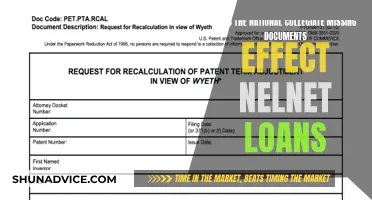
A package loan, also known as a package mortgage, is a type of loan used to finance the purchase of a house and the personal property contained within it, such as appliances, furniture, and carpeting. In other words, it covers the costs of the property and its contents, offering a low-interest payment. Both the real estate and the personal property act as collateral for the loan, meaning that if the borrower defaults, the lender has the right to seize the house and the financed personal property. This type of loan is beneficial for buyers who want to streamline the financing process for a single property, as it eliminates the need for multiple loans and closing processes.
Package Loan Characteristics and Values Table
| Characteristics | Values |
|---|---|
| Type of Loan | Real estate loan |
| Purpose | To finance the purchase of a new home and its contents, such as appliances, furniture, carpeting, and window coverings |
| Collateral | Both the real estate and the personal property are used as collateral for the loan |
| Interest Rate | Potentially lower interest rates |
| Benefits | Simplifies the buying process, streamlines financing for multiple properties, eliminates the need for multiple loans and closing processes |
| Lender's Requirements | Financial statements, projections, balance sheet, assets, liabilities, net worth, business credit report, tax returns, relevant legal documents, collateral |
| Borrower's Requirements | Comprehensive business model, detailed plans for borrowed capital, essential metrics and projections, market assessment |
What You'll Learn

Package loan vs. blanket mortgage
A package loan, also known as a package mortgage, is a type of loan that combines financing for a house and the personal property contained within it, such as appliances and furniture. Both the real estate and the personal property are used as collateral for the loan. This means that if the borrower defaults, the lender has the right to seize the house and the personal property financed under the package mortgage. This type of loan is beneficial for buyers who wish to finance the purchase of a home and its contents together, potentially simplifying the buying process and possibly securing a lower interest rate for the total package.
A blanket mortgage, on the other hand, is designed to finance multiple real estate properties under a single loan. It is a great alternative for those looking to finance the purchase of multiple properties, especially developers, real estate investors, and flippers. A blanket mortgage allows borrowers to use multiple properties as collateral under one loan instead of separate loans, saving time, energy, and money. It also reduces paperwork as there is only one loan application.
One of the primary benefits of a blanket mortgage is that it allows the borrower to have more cash on hand. The borrower only needs to pay one set of fees for the blanket mortgage, rather than separate fees for each property. This can result in a lower interest rate than multiple mortgages spread across multiple properties. There is also only one closing cost payment, avoiding the need to pay closing costs multiple times.
However, there are some potential downsides to a blanket mortgage. Since the properties are used as collateral for one another, defaulting on the loan may result in losing some or all of the properties to foreclosure. Blanket loans also tend to be harder to find, as not all mortgage lenders offer them, and those that do often have strict requirements. Additionally, while there may not be multiple origination fees, the closing costs on a blanket loan are typically much higher than those of a traditional mortgage.
In summary, a package loan is suitable for buyers looking to finance a single property and its contents, while a blanket loan is designed for borrowers seeking to finance multiple properties under one agreement. Both types of loans have their advantages and disadvantages, and the choice between the two depends on the specific needs and requirements of the borrower.
Harmony Loans: Understanding the Basics of This Financial Option
You may want to see also

The role of package loans in real estate
In the world of real estate, mortgage loans are a critical component of any transaction. Package loans, also known as package mortgages, are a unique type of loan that combines financing for both a house and the personal property contained within it, such as appliances and furniture. This means that the loan covers the purchase of the real estate itself as well as any additional items included in the sale, with both serving as collateral for the loan. This type of loan is particularly beneficial for buyers who want to finance the purchase of a home and its contents together, simplifying the buying process and potentially securing a lower interest rate for the total package.
One of the key advantages of a package loan in real estate is its ability to streamline the financing process for multiple properties. Instead of requiring multiple loans and closing processes, a package loan allows buyers to secure financing for a home and its contents with a single loan. This can be especially useful for those purchasing multiple properties, such as investors, developers, or builders, who can benefit from the efficiency of a blanket mortgage, a type of package loan that covers multiple real estate properties under one agreement.
When considering a package loan, it's important to understand the distinction between package mortgages and blanket mortgages. While a package mortgage typically applies to a single property and its contents, a blanket mortgage is designed for multiple separate properties, consolidating their financing under one loan. This distinction is crucial, especially when preparing for a real estate exam, as it demonstrates a comprehensive understanding of mortgage types and their specific use cases.
China's Debt: America's Multi-Million Dollar Question
You may want to see also

Preparing a loan package
A package loan, also known as a package mortgage, is a unique type of loan used to purchase multiple properties under one loan agreement. It combines financing for a house and the personal property within it, such as appliances and furniture. Both assets serve as collateral for the loan, which means that if the borrower defaults, the lender can seize both the house and the personal property. This type of loan is beneficial for buyers who want to streamline their financing process and secure a lower interest rate for the total package.
Now, preparing a loan package can be a resourceful tool for business owners, but it can also be overwhelming. The process involves putting together everything a lender needs to see before you apply for a business loan or line of credit. Here are the steps to follow:
- Understand the Lender's Perspective: Before preparing your loan package, try to understand the risk factors that a lender will consider before lending money. They will want to know that your business is worth investing in and that the potential return on investment is worth the risks.
- Sell Your Company: You need to "sell" the lender on the idea of investing in your business. Prepare a thorough presentation that highlights the potential of your company and how it fits into the market. Be concise and get to the point quickly, as time is valuable.
- Provide Detailed Financial Information: Lenders will require both personal and business financial information. This includes financial statements, tax returns, proof of ownership or lease, licenses required to operate your business, pay stubs, W-2 forms, bank statements, and documentation of other sources of income. It's essential to gather this information beforehand so that you can quickly provide it when needed.
- Discuss the Payback Plan: Along with selling your company's potential, you should also have a clear payback plan. Provide essential metrics and projections to work out a realistic repayment plan with your lender. Be honest and avoid exaggerating any numbers, as it can create problems in the future.
- Prepare a Comprehensive Business Model: Even if your credit history is not ideal, a well-prepared business model can increase your chances of getting a loan. Detail how you plan to use the borrowed capital, including information about your company description, products and services, marketing plan, operational plan, management, and financial plan.
- Consider Using a Standard Form: Using a standard form, such as the Fannie Mae Form 1003, can be a good starting point, even if your lender ultimately has different requirements. This will help you ensure you have the basic information needed for your loan application.
Remember, the specific requirements for a loan package may vary depending on the lender and your situation. Always communicate with loan officers or seek advice from a financial professional to ensure you are on the right track.
SPCA's Trap Loan Program: Humane Solution for Feral Cats
You may want to see also

Loan covenants
A package loan, also known as a package mortgage, is a unique type of loan used to purchase multiple properties under one loan. It combines financing for a home and its contents, such as appliances and furniture. Both the real estate and the personal property are used as collateral for the loan. This type of loan is beneficial for buyers who wish to finance the purchase of a home and its contents together, potentially simplifying the buying process and possibly securing a lower interest rate.
Positive or affirmative covenants outline the specific actions that a borrower must perform. For example, maintaining adequate insurance coverage, providing audited financial statements, and complying with applicable laws and accounting practices. Negative covenants, on the other hand, stipulate the actions that a borrower must refrain from engaging in to protect their credit standing and ability to repay the debt.
Non-financial covenants include expectations that are not directly related to the borrower's financial measures. For instance, providing accountant-prepared financial statements within a certain timeframe or seeking the lender's consent before changing ownership or control. Loan covenants serve the dual purpose of aligning the interests of the borrower and the lender, as well as mitigating transaction-specific risks.
Understanding Private Loan Disbursement: Who Receives the Funds?
You may want to see also

The benefits of package loans
A package loan, also known as a package mortgage, is a type of loan that combines financing for a house and the personal property within it, such as appliances and furniture. This type of loan offers several benefits:
Streamlined financing
One of the main advantages of package loans is that they streamline the financing process for multiple properties. By combining the financing for the real estate and its contents into one loan, borrowers can eliminate the need for multiple loans and closing processes, saving time and effort.
Simplified buying process
Package loans can simplify the home-buying process by allowing borrowers to finance the purchase of a home and its contents together. This means that borrowers do not have to seek separate loans for the property and the items within it, which can be a more straightforward and convenient option.
Potential for lower interest rates
Because package loans combine multiple purchases into one loan, there is a potential to secure a lower interest rate for the total package. This can result in cost savings for the borrower compared to taking out separate loans with higher interest rates.
Single monthly payment
With a package loan, borrowers make a single monthly payment that covers both the property and its contents. This can be easier to manage than multiple loan payments and can also help borrowers stay organised with their finances.
Collateral
In a package loan, both the real estate and the personal property within it are used as collateral for the loan. This means that the borrower can secure a larger loan with more favourable terms, as the lender has the right to seize the property and its contents if the borrower defaults on the loan.
Title Loans: Who Are the Buyers?
You may want to see also
Frequently asked questions
A package loan is a type of mortgage that covers the property and its contents, including appliances, furniture, and other personal property.
A package loan finances a single property and its contents, while a blanket mortgage finances multiple separate properties under one loan agreement.
A package loan simplifies the financing process by eliminating the need for multiple loans and closing processes. It can also result in a lower interest rate for the total package.
To get a package loan, you will need to assemble a loan package or loan covenant, which includes financial statements, projections, assets, liabilities, and net worth. The more detailed your plans for the borrowed capital are, the more likely you will get the loan.







